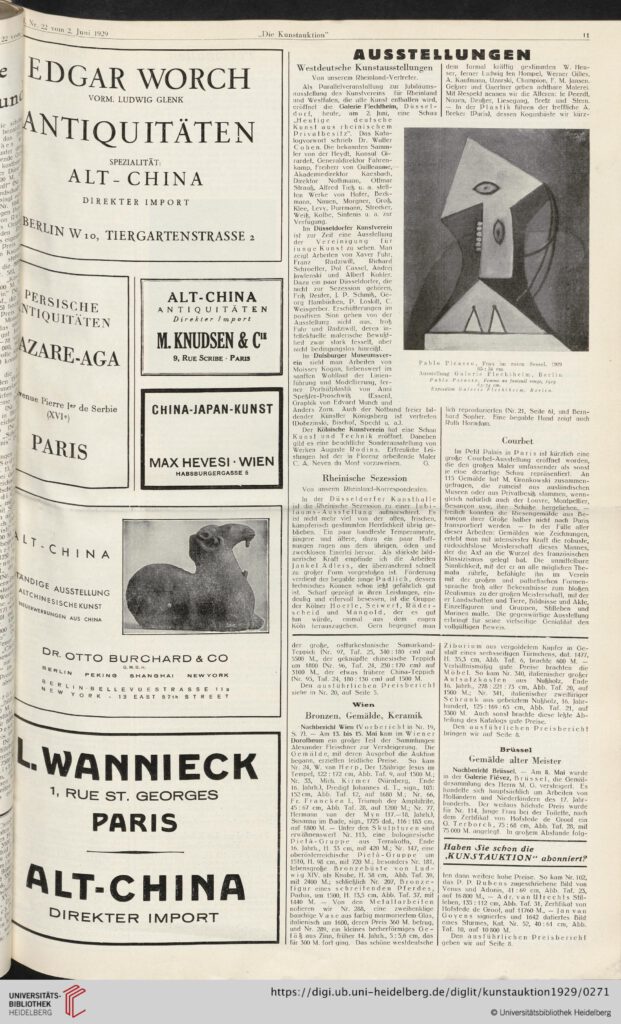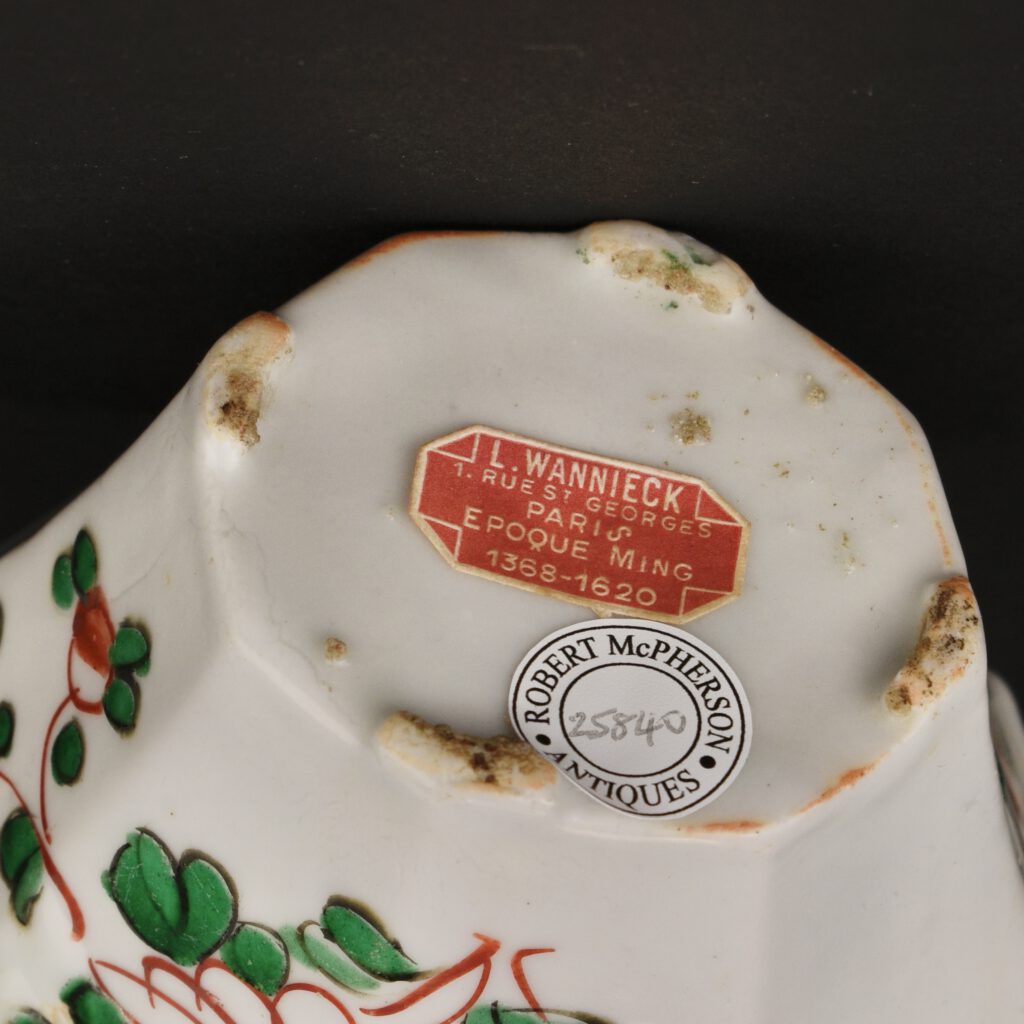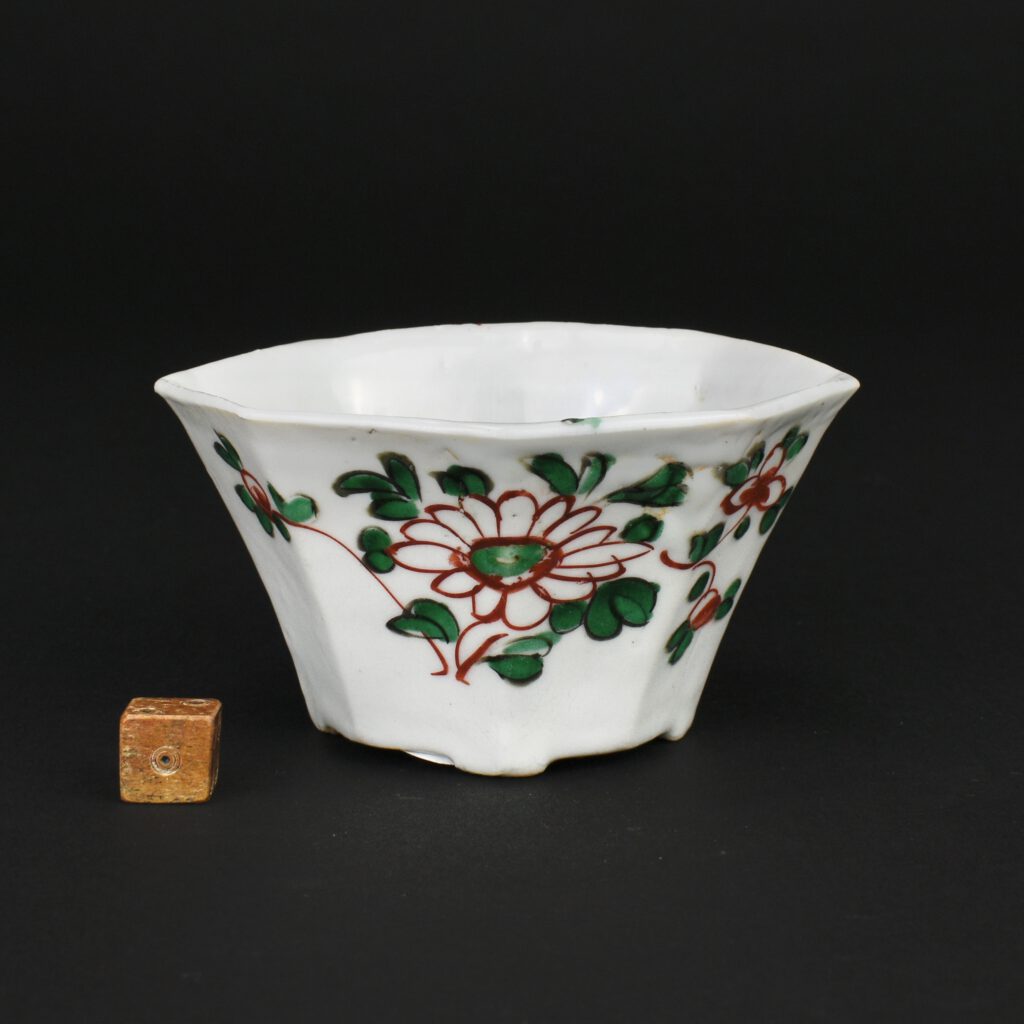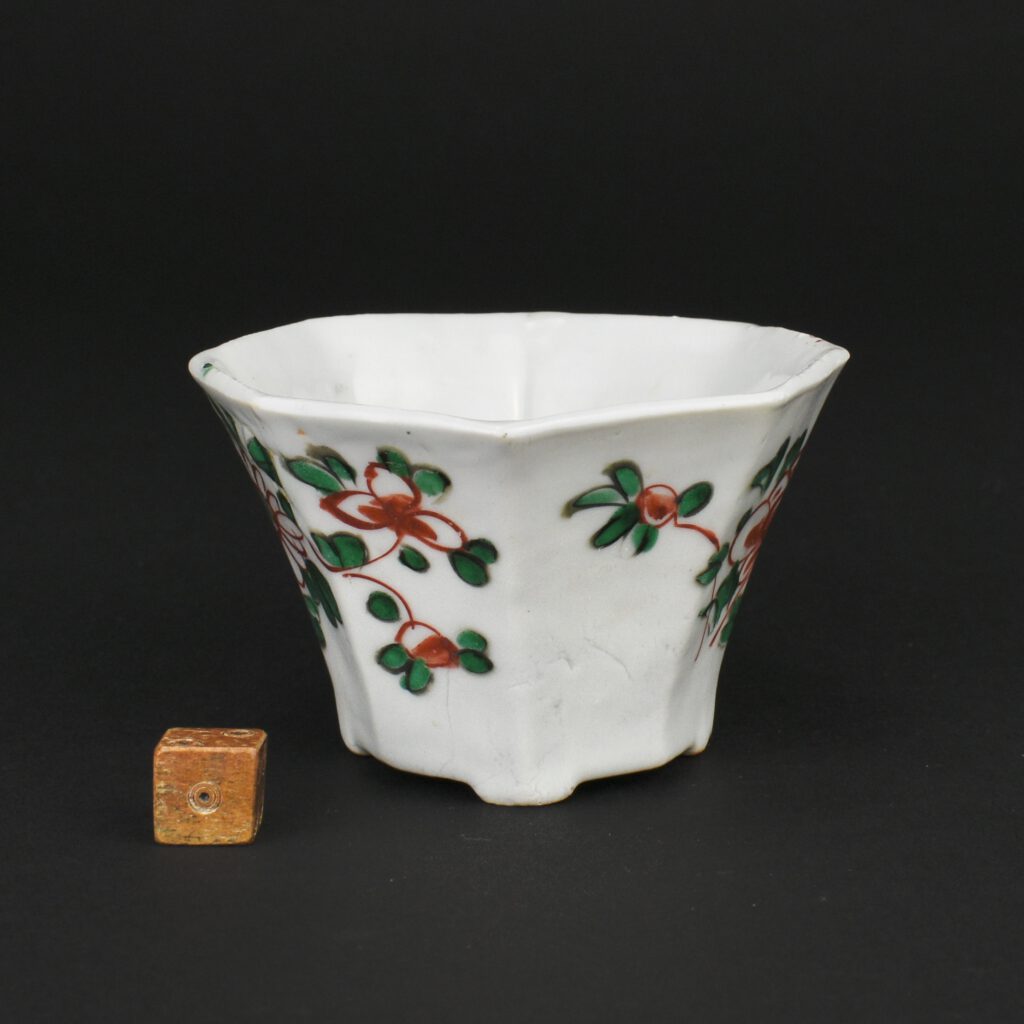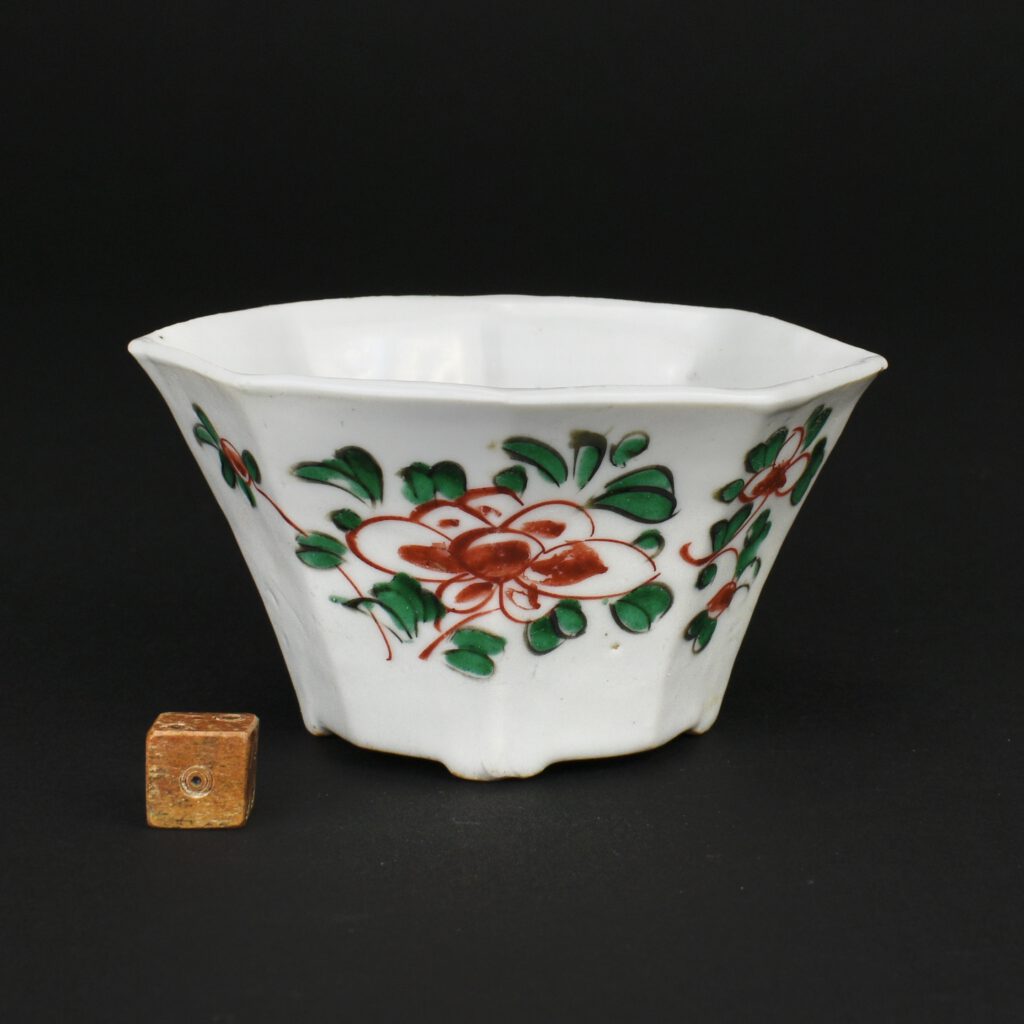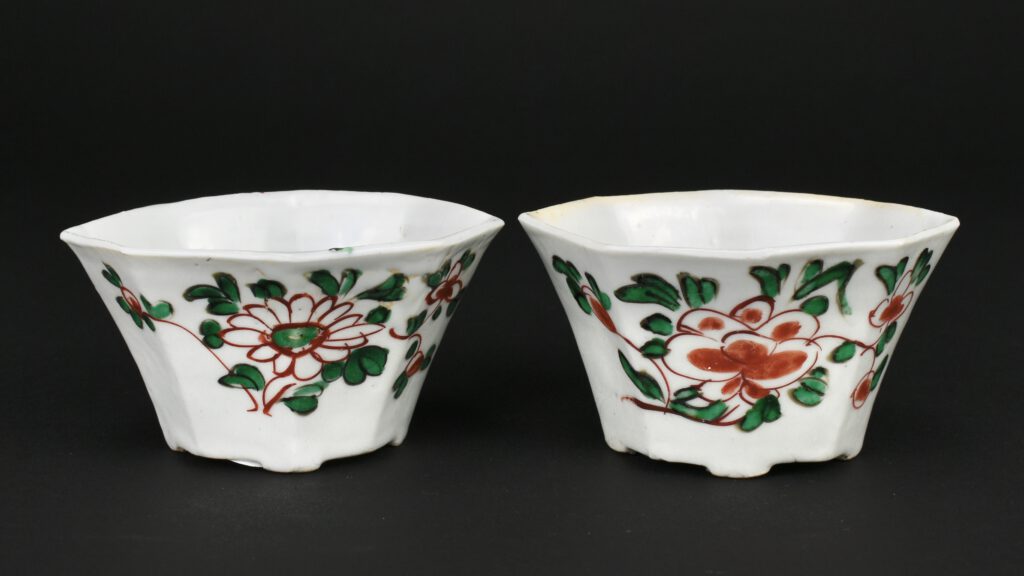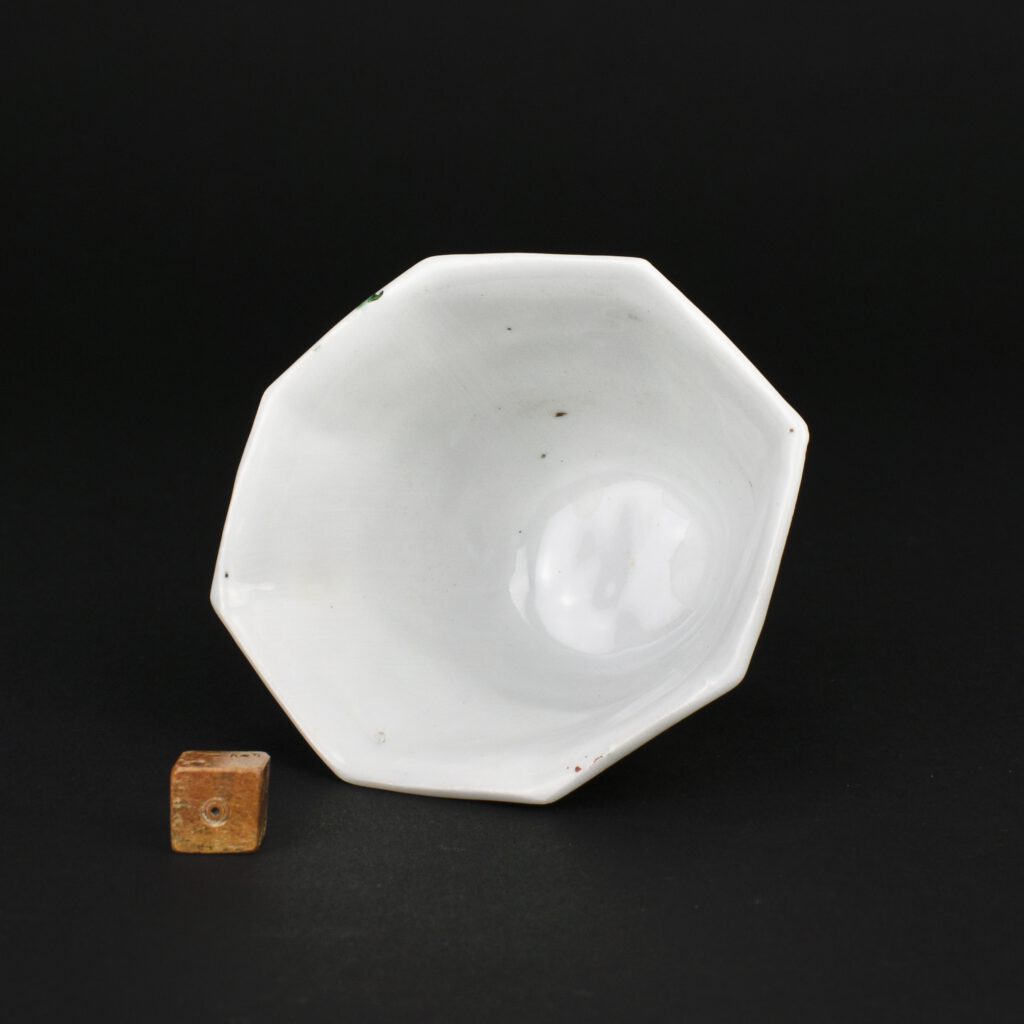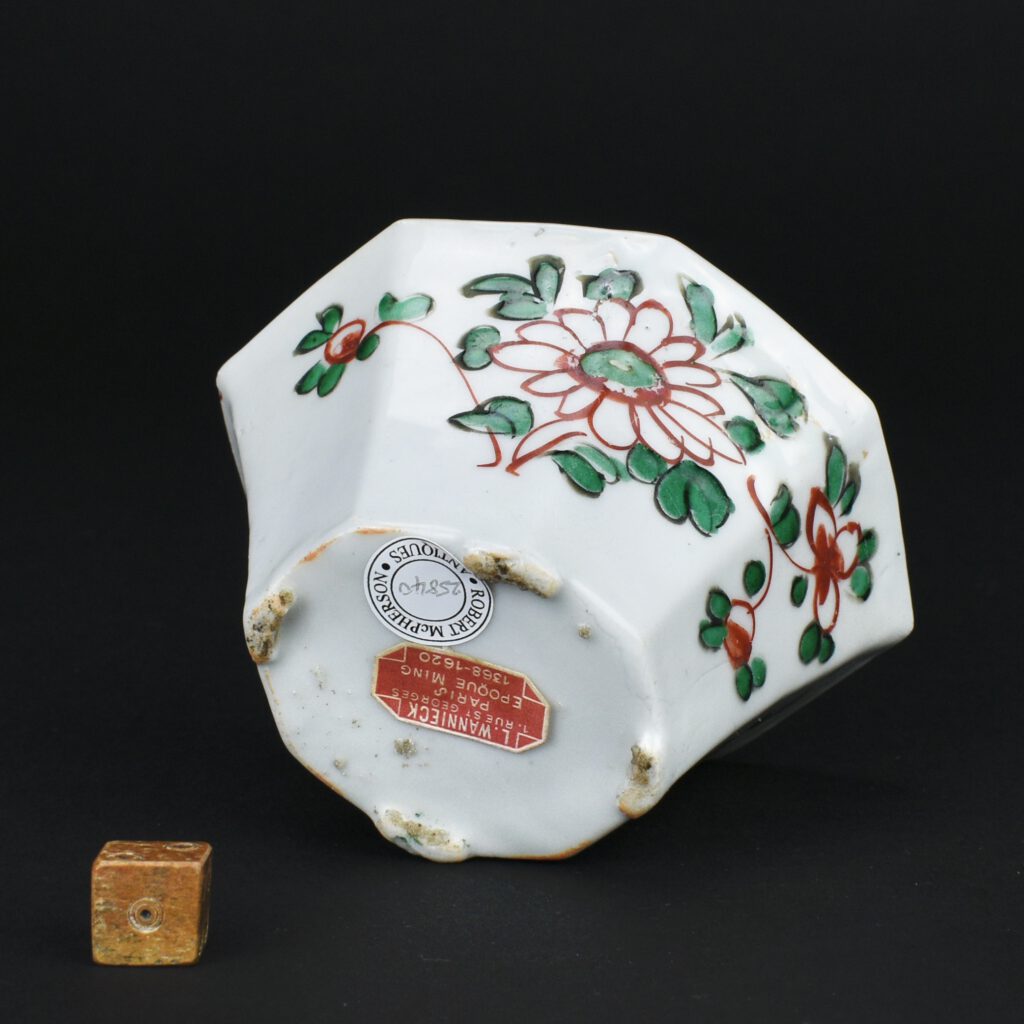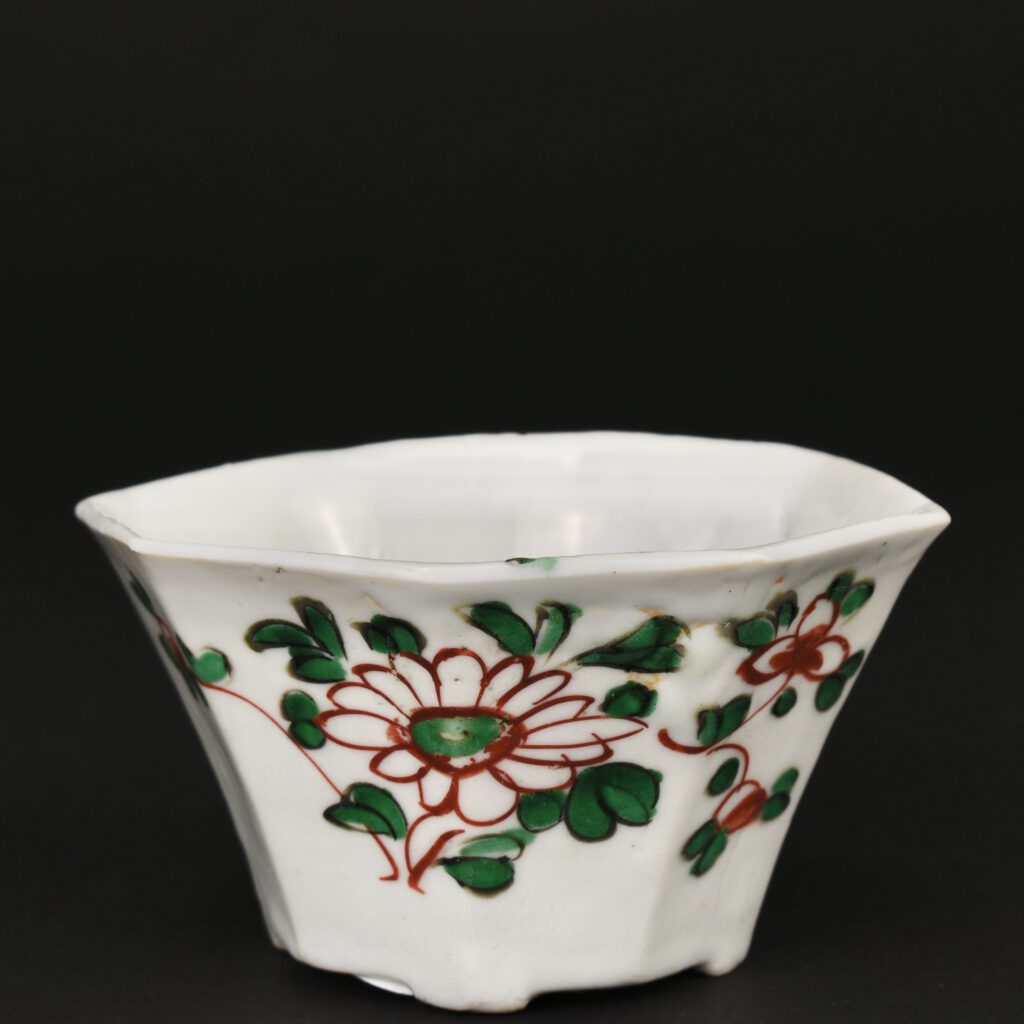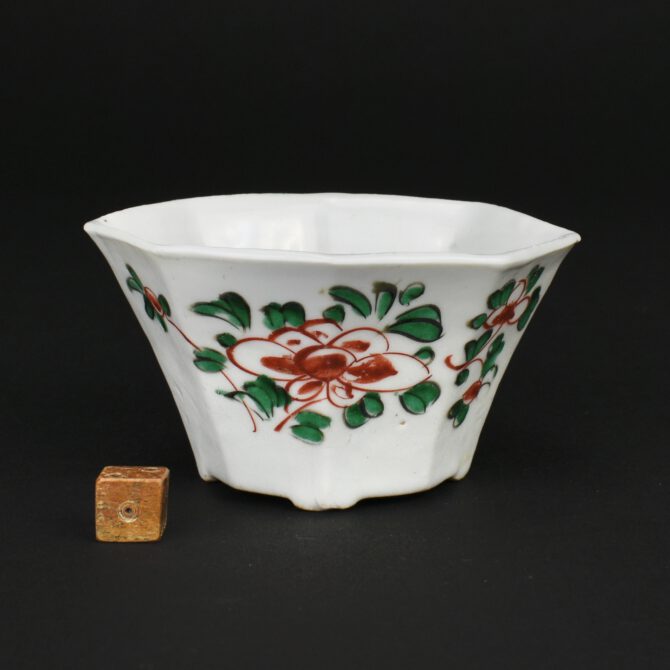
A Rare Kangxi Porcelain Wine Cup from Fujian
A Rare Chinese Porcelain Wine Cup, Kangxi Period 1662-1722, Probably Dehua Kilns, Fujian Province. This rare cup is very similar to Blanc de Chine porcelain and indeed it was made in the same region of China, Fujian province ,but the decoration was probably done at Zhangzhou, in Fujian. That is why the colours relate to Swatow ware which was made and decorated in Zhangzhou. This cup probably comes from the Blanc de Chine kilns, some pieces are known with Chinese enamel decoration, for example the beaker from the Helen Espir Collection (see below). That beaker has a typical Blanc de Chine look to the body and glaze. This cup is different, clearly from the same region but it is closer to Swatow ware in my opinion. The base is fired red to red orange in places, this is not a typical feature of Blanc de Chine but is common on Swatow wares. The glaze is very much a blue grey. One side is decorated with chrysanthemum, the other with peony.
See below for more photographs and information.
- Condition
- In perfect condition but with minor firing faults.
- Size
- Diameter 10.2 cm (4 inches)
- Provenance
- L. Wannieck, 1 Rue St. Georges, Paris. Red label to base claiming it to be "Epoque Ming 1368-1620".
- Stock number
- 25840
- References
- According to Kerr and Ayers (1). "Evidence of enamelling undertaken by Dehua potters is so far limited to Chinese records of the potters Zeng Maodou and Zeng Dachou who apparently specialised in this technique during the Jiajing period (1522-1566)". However most pieces of enamelled Blanc de Chine herald from a later generation. Kerr and Ayers go on to describe the similarities between the enamel work on Zhangzhou (Swatow) wares and Blanc de Chine produced at Dehua. To my eye the free use of a wet brush, large blocks of vibrant colour and the colour scheme itself, especially the use of turquoise over black, together with the themes attempted are really so similar it seems difficult to believe that the painting wasn`t done at the same place. It would be logical that most, if not all, of the decorated Blanc de Chine porcelain was enamelled at Zhangzhou, because of the very rare occurrence of enamel on Blanc de Chine porcelain compared to the large amount of enamel decoration on (Swatow) ware from Zhangzhou. However, it is possible enamellers from Zhangzhou travelled to Dehua in search of work. Clearly further research is needed. 1) : Blanc de Chine, Porcelain From Dehua, A Catalogue of the Hickley Collection by Rose Kerr & John Ayres, Art Media Resources Ltd 2002.
- £ GBP
- € EUR
- $ USD
Information
Chinese Enamel Decorated Blanc de Chine Porcelain
According to Kerr and Ayers (1). "Evidence of enamelling undertaken by Dehua potters is so far limited to Chinese records of the potters Zeng Maodou and Zeng Dachou who apparently specialised in this technique during the Jiajing period (1522-1566)". However most pieces of enamelled Blanc de Chine herald from a later generation. Kerr and Ayers go on to describe the similarities between the enamel work on Zhangzhou (Swatow) wares and Blanc de Chine produced at Dehua. To my eye the free use of a wet brush, large blocks of vibrant colour and the colour scheme itself, especially the use of turquoise over black, together with the themes attempted are really so similar it seems difficult to believe that the painting wasn`t done at the same place. It would be logical that most, if not all, of the decorated Blanc de Chine porcelain was enamelled at Zhangzhou, because of the very rare occurrence of enamel on Blanc de Chine porcelain compared to the large amount of enamel decoration on (Swatow) ware from Zhangzhou. However, it is possible enamellers from Zhangzhou travelled to Dehua in search of work. Clearly further research is needed. 1) : Blanc de Chine, Porcelain From Dehua, A Catalogue of the Hickley Collection by Rose Kerr & John Ayres, Art Media Resources Ltd 2002.
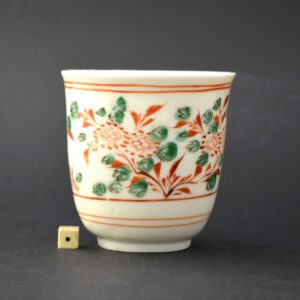
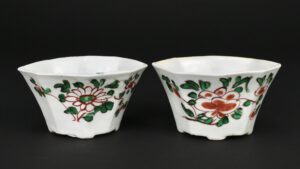
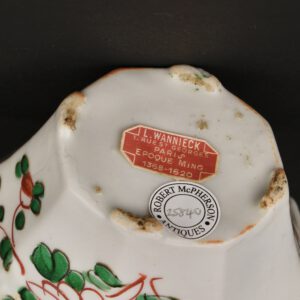
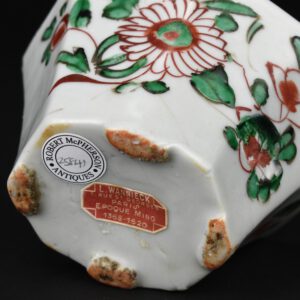

Blanc de Chine Libation Cups
Blanc de Chine wine cups of this type have been traditionally referred to as `Libation Cups`. This is unlikely to be correct but their shape follows that of rhinoceros horn cups which was made locally, it is interesting baring in mind the important powers that the Chinese attach to this material. By having a Blanc de Chine cup of this form some of the powers of real rhinoceros horn might be conveyed to the drinker.
Blanc de Chine Porcelain
The porcelain known in the West as Blanc de Chine was produced 300 miles south of the main Chinese kiln complex of Jingdezhen. The term refers to the fine grain white porcelain made at the kilns situated near Dehua in the coastal province of Fujian, these kilns also produced other types of porcelain. A rather freely painted blue and white ware, porcelain with brightly coloured `Swatow` type enamels as well as pieces with a brown iron-rich glaze. However, it is the white Blanc de Chine wares that have made these kilns famous. The quality and colour achieved by the Dehua potters was partly due to the local porcelain-stone, it was unusually pure and was used without kaolin being added. This, combined with a low iron content and other chemical factors within the body, as well as the glaze, enabled the potters to produce superb ivory-white porcelain. White porcelain was made at the Dehua kilns from early times, some books refer to the white porcelain produced during the Yuan period as being Blanc de Chine, but I think it is not really until the latter stages of the Ming dynasty, during the late 16th century, that a porcelain with clearly recognisable Blanc de Chine characteristics was produced. There is a theory that there was a brake in production during a large part of the 18th century. I am highly sceptical of this, it seams likely that Blanc de Chine porcelain was made all the way through, uninterrupted from the Ming dynasty to the present day.
